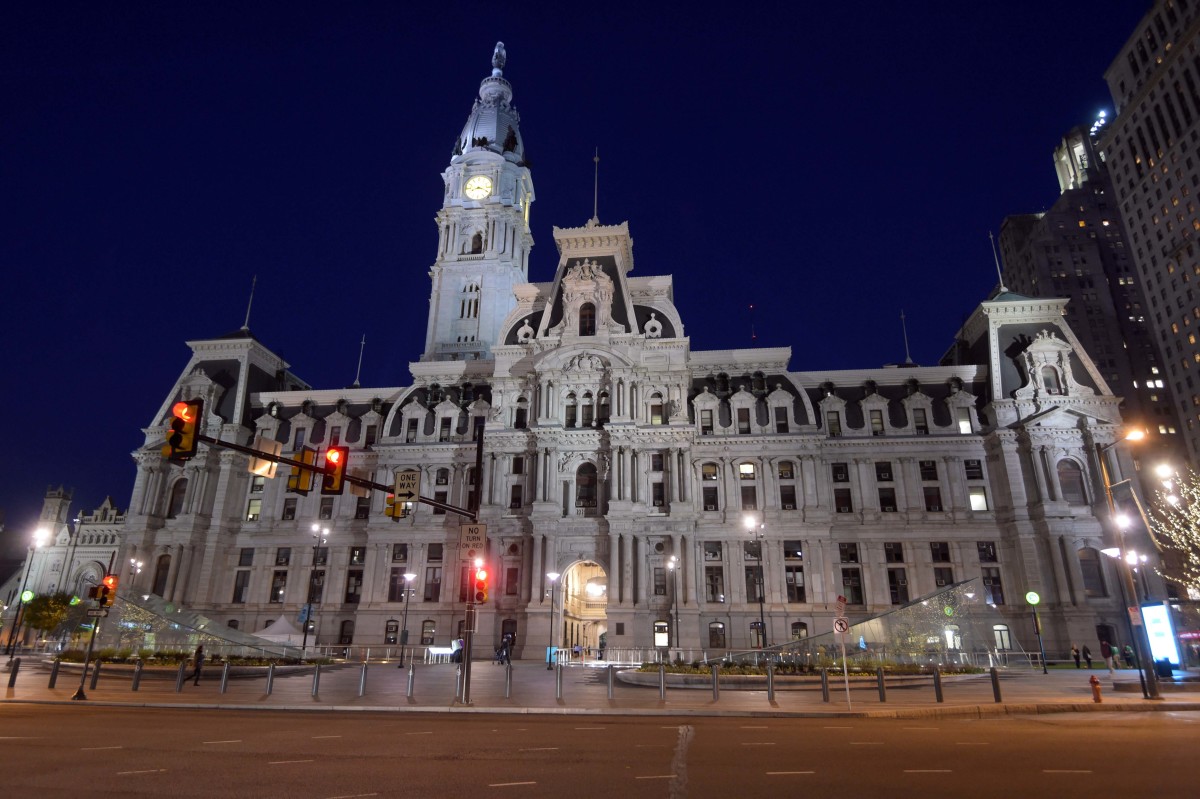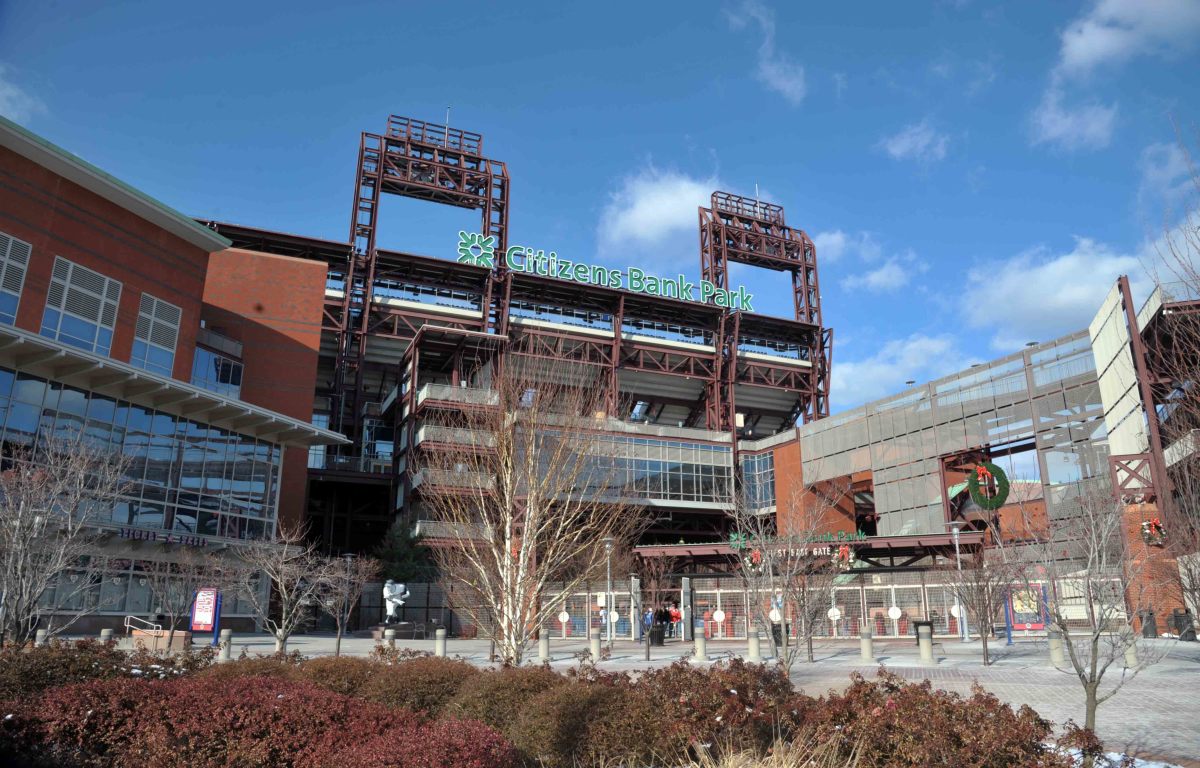How did Philadelphia end up with Citizens Bank Park?

It’s March 21, 2004 at 7:00 p.m. and the sound of explosions ring out around South Philadelphia. Veterans Stadium, home to both the Philadelphia Phillies and Eagles for over 30 years is collapsing inwards.
1980 World Champion Greg Luzinksi stands on the stage where the detonator had just been pushed. Phillies and Eagles fans behind him look on in conflicted amazement and horror. The location of the greatest triumphs in their city’s history, the arena of modern day gladiators, is gone in a cloud of rubble, dust and debris.
Veterans Stadium was a bloated architectural eyesore barely two decades after it opened, a multipurpose, cookie cutter donut; its twins could be found in so many American cities from Houston to New York and St. Louis to Pittsburgh.
Mice infested Veterans Stadium’s concourses and shops, sewage overflowed from its toilets and a hole in the visitor’s shower room allowed players to peep into the Eagles cheerleaders’ dressing room. Late one night, former Eagles assistant coach Jon Gruden remembers two cats and four mice falling through the drop ceiling onto his desk.
Veterans Stadium’s nylon turf, once a modern wonder in 1971, became blotchy and would be more accurately described as a thin rug over concrete. Baseball players frequently injured themselves attempting diving plays and Arizona Cardinals coaches once told their offense never to run or pass to the side of the field with patches covering the baseball infield.
Yet, for all its flaws Veterans Stadium was nearly as historic as any stadium in Philadelphia’s storied history. There Mike Schmidt won three MVPs and 10 Gold Gloves. Steve Carlton broke MLB’s career strikeouts record, the Eagles made their first Super Bowl and most importantly the Phillies captured the first World Series in a club history that spanned 97 years.
By 1997 both club and city knew they would be building a new stadium, but neither when or where had yet to be determined. Potential locations included downtown sites at 30th Street Station or the Delaware Waterfront, more realistically politicians proposed sites at Broad and Spring Garden and perhaps most appetizingly in Chinatown at 12th and Vine.
A report that year from Arthur Anderson estimated the economic impact of a downtown ballpark at $417 million, nearly double the $229 million annual revenue from Veterans Stadium.
A downtown ballpark seemed almost obvious, especially to Mayor John Street but also to Phillies management. Just a few years earlier the Orioles had revitalized their failing attendance with a new ballpark at Camden Yards on the Baltimore waterfront. So to had Denver built a new park and saw a drastic uptick in attendance, even though they still languished in the cellar of the National League.
In 1999 the Phillies would win five more games than the Rockies, 77 to 72, but drew barely half the fans 22,535 to 42,976 per game. Meanwhile down in Baltimore, the Orioles drew 42,385 per game on only 78 wins. Both Baltimore and Denver had less than half Philadelphia’s metro population.
However, a downtown ballpark was concerning to some older Phillies management. They remembered the debacle that was downtown Connie Mack Stadium at 21st and Lehigh. Once a bustling center of commerce early in the 20th century, its North Penn neighborhood had fallen into disrepair and economic hardship during the Depression and never recovered.
So little parking was there around Connie Mack Stadium that a major selling point for Veterans Stadium at its opening was the 15,000 parking spaces in its South Philly lots.
Larry Shenk, the Phillies VP of Public Relations from 1963-2008 said in a 2000 article “The Chinatown site poses significant challenges, including parking, accessibility, traffic, timing and cost.”
The Phillies weren’t necessarily against a downtown ballpark, but there would certainly be hurdles to jump should they build downtown. The foremost of which were the Philadelphians themselves.
In the spring of 2000, Mayor John Street recommended that the ballpark be built downtown, specifically at the Chinatown site. Immediately, Chinatown’s residents sprang into action.
"The stadium won't be built here. We won't let it," said Helen Gym in a 2000 Washington Post article.
That June, hundreds of angry residents converged on City Hall to protest the site of the park. Many were upset at the thought the ballpark would block northward expansion of their neighborhood, small business owners were worried that ball games would drive customers away and others were upset at a misuse of public funding.

"Chinatown has no public school, no library, no community center, no healthcare center, one outdoor basketball court and minimal recreation areas," said one protester Phillip Siu, a pediatrician whose offices were located near 6th and Vine. “Is a stadium the best thing for Chinatown at this point?"
Ultimately the Phillies abandoned any plans of building in Chinatown, for one they would have to buy land from dozens if not “hundreds” of landlords and homeowners and the $170 million they received from the state would be better spent elsewhere.
At 30th Street Station many similar problems arose. Much of the land was owned by UPenn and according to park Project Designer Bob McConnell, “[UPenn] had better ideas for that land than selling it to anybody.”
By that point, it seemed everyone had had enough. The Phillies were tired of searching for a new location and much of the public was sick of fighting legal battles. So later in 2000 Governor Ed Rendell recommended the Phillies set their eyes on the same South Philly Sports Complex where Veterans Stadium already resided.
Focus shifted now more than ever to design and architecture rather than location. McConnell remembers travelling around America with Phillies President and co-owner Dave Montgomery, “In every stadium we visited, he made a point to go and sit in the worst seat in the house.”
Montgomery wanted to understand the fan experience for patrons who couldn’t afford the best tickets. His new ballpark would be different from Veterans Stadium where seats sometimes pointed away from the playing field and stands towered over the field at tremendous height in the 700 level. The stadium dubbed Citizens Bank Park in 2003 was to be intimate, evoking memories of Connie Mack Stadium, last used by the Phillies in 1970.

The light towers at Citizens Bank Park would be built square, park angles would be sharp and the backstop was flat, even the outside of the park, P-H-I-L-A-D-E-L-P-H-I-A was spelled into the red brick exterior, all just as at Connie Mack Stadium
Ground was broken for Citizens Bank Park June 28, 2001 and Bobby Abreu hit the ballpark’s first home run barely three years later on April 3, 2004. That year the Phillies had the highest attendance per game (40,125) in club history to that point, a history which spanned more than a century.
Larry Bowa, now Phillies manager during opening day in 2004 remembers the atmosphere at the new ballpark, “It was electric, there’s no question, especially opening day there, I mean it was packed!”
Four years later the Phillies were World Champions at the new ballpark, sparking a sellout streak which began in 2009 and lasted through 2012 for 257 games, the third longest in MLB history.
Today Citizens Bank Park still stands as one the foremost of its kind in MLB. It’s location in South Philadelphia next-door to the Eagles’ Lincoln Financial Field is a reminder to the history the two teams once shared at Veterans Stadium.
More From SI's Inside The Phillies:
- What it Means to be a Phillies Fan
- With Knebel, Have the Phillies Found Their Closer?
- With the Lockout, Where Do the Phillies Go From Here?
Make sure to follow Inside the Phillies on Facebook and Twitter!
